Can You Replace An Undermount Sink With A Quartz Countertop?

Undermount sinks are popular fixtures that one can find in homes both old and new these days, and they’re preferred over traditional sinks for a variety of reasons. But owners and non-owners alike have questions about undermount sinks, with one of the common ones being: can an undermount sink be replaced with a quartz countertop?
This article will answer this question as well as provide more useful information about undermount sinks and quartz countertops.
Yes, an undermount sink can be replaced with a quartz countertop. In fact, quartz and granite countertops are ideal for undermount sinks, as these countertops are made of strong materials that can easily bear the weight of an undermount sink. Quartz and granite are considered superior when compared to tile and laminate.
Do You Need to Hire Sink Installers?
Get free, zero-commitment quotes from pro contractors near you.

What Is an Undermount Sink?
An undermount sink is a sink that’s installed under the counter. Undermount sinks are an alternative to traditional sinks, which are dropped into pre-cut countertop holes. Because of the way an undermount sink is mounted, no sink rim will be visible above the countertop.
Undermount sinks can be made of a variety of materials, with stainless steel, cast iron, and copper being some of the most popular options. Also, you can get a single-bowl or a double-bowl undermount sink.
And because there are no lips and crevices, you don’t have to worry about dirt, food, and grime buildup. Crumbs can be wiped directly into the sink, making cleaning a breeze.
Lastly, since the edge of the sink won’t be visible, the counter-sink combination will help create a sleek and appealing kitchen decor. For these sinks, faucets are installed either on the counter, behind the sink, or on nearby walls.
Where Do Undermount Sinks Work Best?
Undermount sinks are most efficient when they are attached to solid surfaces like marble, concrete, granite, and quartz. Materials like laminate and tile are not the best for undermount sinks, and this is something you should know before you replace a traditional sink with an undermount model.
Undermount sinks are mounted using special clips, and these clips hold the sink pretty tight to the counter underneath. Replacing an undermount sink is not impossible, and usually this is a job that takes your sink out of commission only for one or two days.
There is, however, the chance that there is a divider in the cabinet under your sink, and if this is the case then a replacement may be a tight fit. This doesn’t mean that a replacement is impossible in this instance, it just means you’ll need a skilled remodeler to get the job done.
Three Avoidable Undermount Sink Problems
Using an undermount sink, especially one that’s made of stainless steel, composite, or cast iron, with a granite or quartz countertop is a good move for a variety of reasons. Such an arrangement looks great while being pretty efficient as well, and that’s because the stuff that’s destined for the garbage disposal can be easily be wiped into the sink without much effort.
But the undermount sink and countertop combination can be made inefficient if the sink is not installed properly, and here are three things you’ll need to avoid when installing an undermount sink.
1. Sink Delamination and Failure
Some sink installers stay away from using clips, rails, brackets, and other mechanical sink attachments, instead opting for silicone adhesives. But the weight of the sink, along with moisture and frequent vibrations from the garbage disposal, will cause the sink to pull away from the adhesive and fail.
The excessive moisture created by this kind of improper installation can also lead to cabinet problems, and getting an installer to redo things once the sink has been mounted can be a tall order. Moreover, fixing the problem with a replacement will cost even more money.
For this reason, you should specify before installation begins that you want some kind of mechanical sink attachment to be what attaches the undermount sink to the countertop. You can also specifically request that silicone adhesives not be used. If an installer refuses to meet these requirements, contact other installers in your area to ensure others will execute the work how you want.
2. Permanent Sink Damage
Often, when silicone adhesive is used to mount a sink under a countertop, permanent epoxy or plywood substrate are used to reinforce the adhesive. This technique may seem effective on paper, but it can actually damage the sink over time and eventually render it ineffective.
There is no way to replace this kind of setup that doesn’t involve destroying countertop and underneath cabinetry. Therefore, if silicon adhesive is what was used to mount your sink to the countertop, the last thing you want is any kind of additional reinforcement, as such will ensure that not only the sink will be ineffective but everything around it as well.
3. Moldy or Cracked Caulk
Just because an undermount sink is underneath the countertop does not mean that sealing is not important. In fact, one could argue that sealing in this instance is even more important, as mold and mildew growth that can result from improper sealing would be much harder to identify.
If improper sealant is used to seal the sink to the countertop, then cracks, mold, and other defects can be expected. Just make sure that your sink installer uses proper sealant. If you catch the installer using painter’s caulk—this really happens—then demand they stop immediately and find someone else to remedy the situation.
Do You Need to Hire Sink Installers?
Get free, zero-commitment quotes from pro contractors near you.

Why Quartz Countertops Are Preferred
An undermount sink—especially when it’s combined with a quartz or granite countertop—is preferred in large part because the arrangement looks high-end. Undermount sinks also make draining easier while helping to eliminate countertop water accumulation.
Sinks that are top-mounted, in the traditional way, take up valuable counter space. Moreover, these sinks are louder than undermount sinks, mainly because the latter sinks are often deeper and therefore able to dampen the noise running water makes when it hits the basin. In the end, an undermount sink and quartz countertop combination is visually appealing while being efficient as well.

Matt loves everything DIY. He has been learning and practicing different trades since he was a kid, and he's often the first one called when a friend or family member needs a helping hand at home. Matt loves to work with wood and stone, and landscaping is by far his most favorite pastime.
More by Matthew Mountain



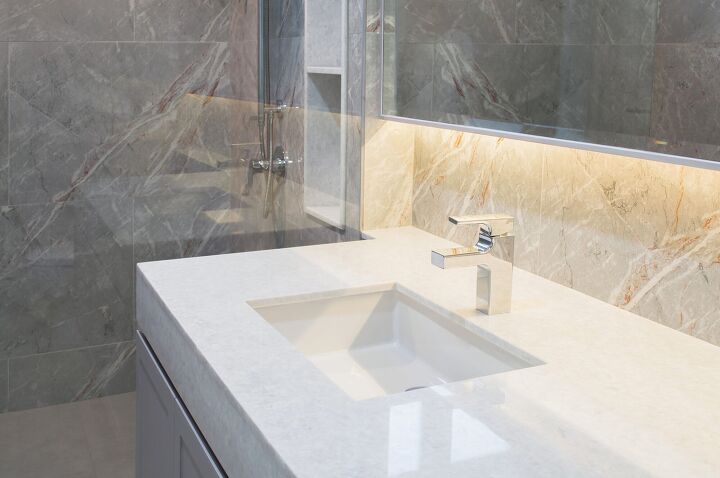






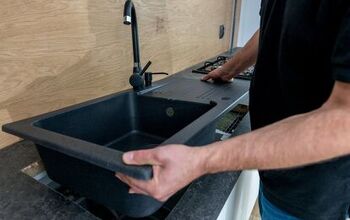

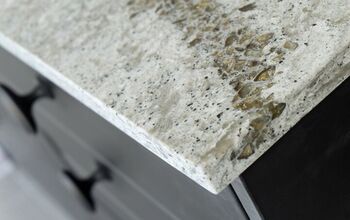
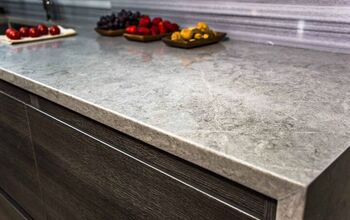
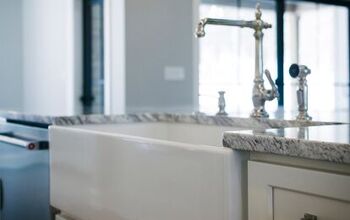






![Cost To Drill A Well [Pricing Per Foot & Cost By State]](https://cdn-fastly.upgradedhome.com/media/2023/07/31/9074980/cost-to-drill-a-well-pricing-per-foot-cost-by-state.jpg?size=350x220)





